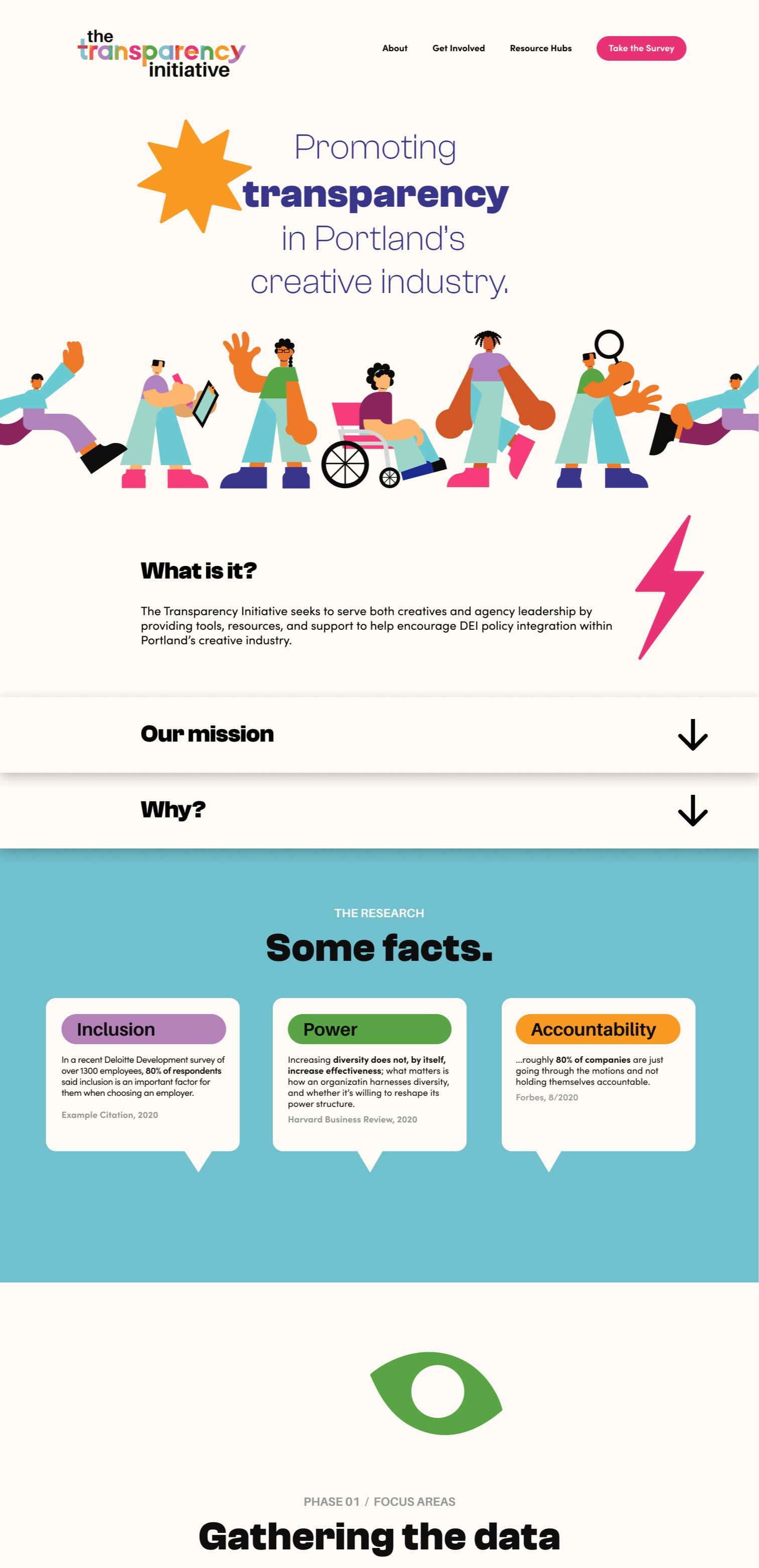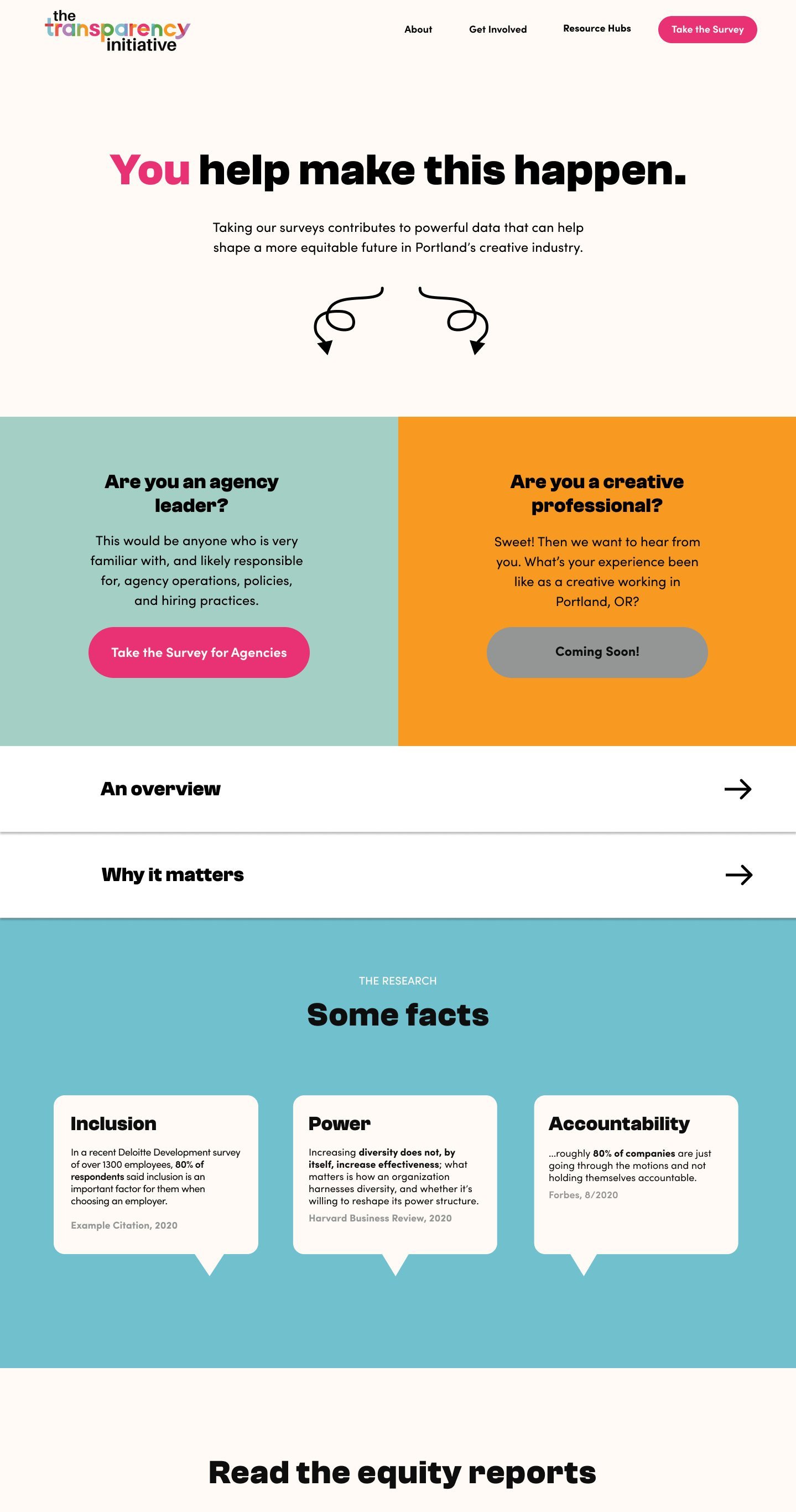Fostering a more equitable and inclusive creative community.
The Transparency Initiative was created as part of AIGA Portland’s Design For Good program. Design For Good’s purpose is to develop initiatives that help to foster positive social impact on issues that greatly affect designers working and living in Portland, OR. This initiative specifically aims to provide resources to embed DEI into business practices, and to survey agencies and creatives to better understand their experiences with DEI in the workplace.
My Role
I worked as a User Experience Designer with a creative team of three—Audrey Desler, our Creative Director, and Madi Graham, our Visual/UI Designer and Strategist. My responsibilities included:
- User Research
- User Testing
- Information Architecture
- Interaction Design
- Mid-Fidelity Wireframing
Timeline: April 2022 - August 2023
Discovery
We began the discovery phase by identifying who our target audiences would be, researching similar projects, and creating user personas for both our agency and creative viewers, and formulated goals which included:
- Creating “Resource Hubs” that resonated with both agencies looking to improve in DEI, and creatives seeking DEI-related resources.
- Providing ways that others can get involved to help create a more inclusive and creative Portland community.
- Create a warm and inviting website so that agencies and creatives would feel comfortable contributing to our surveys and data.
Sitemap Creation
To ensure that all information and calls to action were captured, I created a sitemap that we brainstormed on when building out our wireframes. We made key decisions here on how best to handle surveys, survey data, how best to bifurcate the resources for agencies and creatives and also the best ways to help others get involved in the initiative.
From Low-Fi to MVP
Audrey, Madi and the OSU FLUX Team were primarily responsible for creating the visual guidelines and branding behind the Transparency Initiative.
We iterated on this landing page as well as the other pages in the website, taking them from low-fi concepts to an MVP that we could take in for user testing. In the iteration process, we considered the following:
What do we prioritize, surveys? resource hubs, local resources?
How can others get involved in the initiative?
What will the landing page look like when surveys open and close? When they are inactive?
How do we highlight other local efforts?
Once we created the website, I created a test script and conducted moderated user tests on both desktop and mobile. Some of our key takeaways influenced the fixes that we made prior to launch. These included:
Showcasing more of what the Transparency Initiative was doing (besides just CTAs for the Survey for Agencies and Survey for Creatives).
Highlighting more of the why behind the initiative itself (Why should I complete this survey? What is the organization’s goal? How will the data be used?).
Providing more information around what some of our resource hub links represented.
User Testing
Final Designs
Below are some examples of the finished Transparency Initiative website. Some of it has changed since I have left, but this was current as of August 2023:













